Launched exclusively for the Chinese market, the K40 Pro+ is Xiaomi’s latest device in their Redmi line of more affordable smartphones. Features include the Snapdragon 888 chipset with 12GB RAM and 256GB internal storage; as well as a 6.67-inch, FHD+ resolution, 120 Hz display, and a 4520 mAh battery with fast 33 W charging.
There’s a triple camera on the rear offering smartphone photographers a standard wide angle main shooter, a second ultra-wide and a tele-macro option. The primary camera is built around a large 108 MP 1/1.52-inch sensor with 2.1µm pixels, coupled to a f/1.75-aperture lens. The ultra-wide module offers a 119° field of view from its f/2.2-aperture lens and records images on a 8 MP sensor. Completing the triplet is a tele-macro camera, which utilizes a 5 MP sensor.
Let’s find out where the Xiaomi Redmi K40 Pro+ ranks in our database of smartphone image quality.
Key camera specifications:
- Primary: 108 MP 1/1.52-inch sensor with 2.1µm pixels, 7P f/1.75-aperture lens
- Ultra-wide: 8 MP sensor, 119° field of view, f/2.2-aperture lens
- Tele Macro: 5 MP sensor
- 4320p/30fps, 2160p/60,30 fps, 1080p/60,30 fps video (2160p/30 fps tested)
About DXOMARK Camera tests: For scoring and analysis in our smartphone camera reviews, DXOMARK engineers capture and evaluate over 3000 test images and more than 2.5 hours of video both in controlled lab environments and in natural indoor and outdoor scenes, using the camera’s default settings. This article is designed to highlight the most important results of our testing. For more information about the DXOMARK Camera test protocol, click here. More details on how we score smartphone cameras are available here.
Test summary
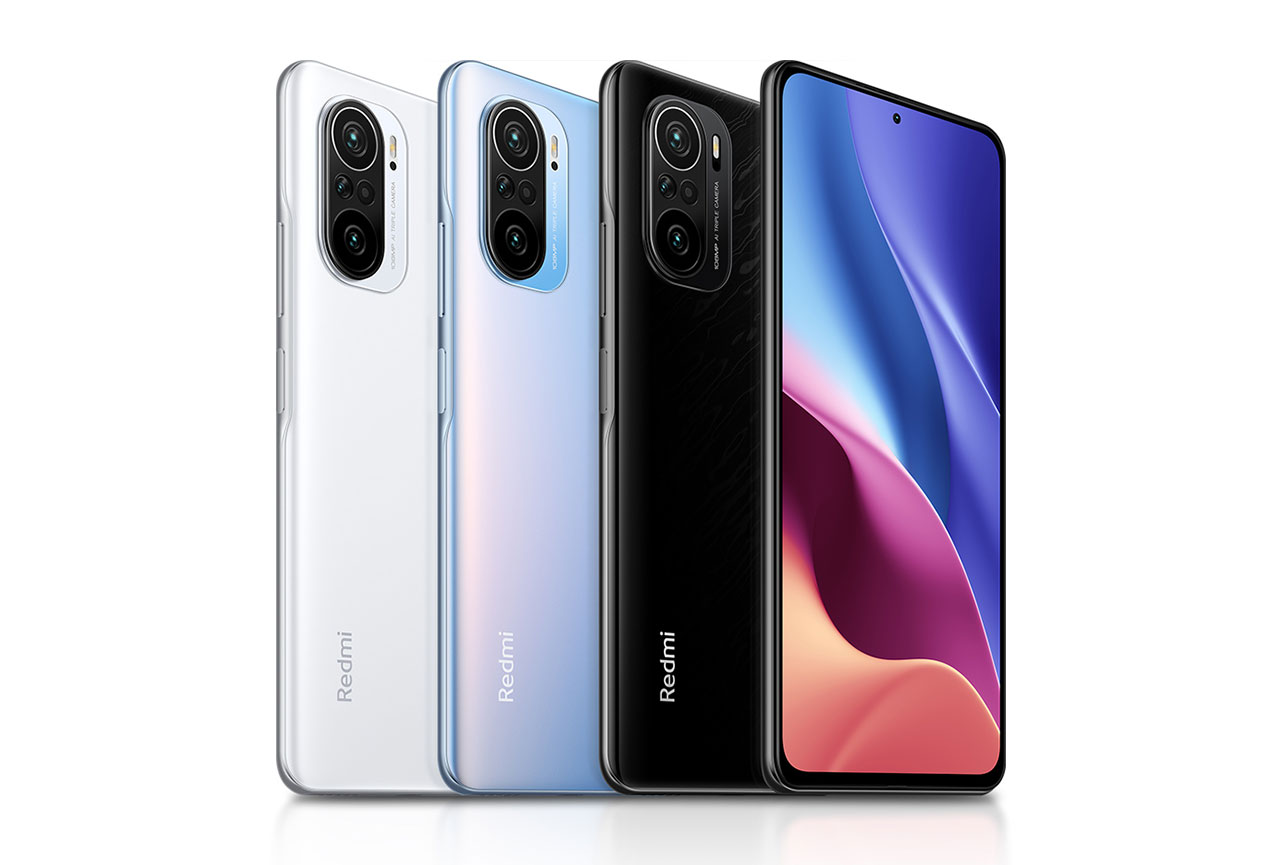
Xiaomi Redmi K40 Pro+


Pros
- Neutral white balance and accurate skin tones in outdoor and indoor photos
- Good detail in indoor photos
- Well-controlled noise in outdoor and indoor photos
- Reliable target exposure in preview
- Good depth estimation in bokeh photos
- Accurate video target exposure
- Pleasant color in outdoor videos
- High detail in most videos
Cons
- Under exposure in low light photos
- Limited depth of field
- Low detail in outdoor and low-light conditions
- Noise is visible in low-light photos, especially towards the edges
- Limited field of view from the ultra-wide camera
- Low detail in most tele photos
- Autofocus instabilities in low light videos
- Strong jello effects in walking videos
- Limited dynamic range in most videos
With a score of 108, the Xiaomi Redmi K40 Pro+ ranks in the bottom half of our database overall, but 4th in our High-end segment of devices priced between $400 – $599. It remains a few points behind Xiaomi’s own Mi 10T Pro 5G on 118, but the Redmi K40 Pro+ manages to post a better score than devices such as the Samsung Galaxy A52 or A71.
The Xiaomi Redmi K40 Pro+ performs rather well in favorable lighting conditions and was only slightly behind Ultra-Premium devices like the Samsung S21+ 5G in many photo categories. The Photo score of 113 is based on accurate white balance with pleasant skin tones, good detail and low noise in well-balanced indoor or outdoor lighting. It’s less adept in challenging HDR or low light scenes however, and limited depth of field affects background subject sharpness in all shots.
The Xiaomi Redmi K40 Pro+ achieves a Zoom score of 42. Ultra-wide shots display generally accurate target exposure, but the level of detail is low, and some noise and color fringing is often evident in the outer field. The K40 Pro+’s tele-macro module performs best at close-range in good light, but detail is fairly low at most zoom ranges and some aliasing artifacts are visible.
With a Video score of 102, the device ranks joint 2nd for High-end smartphones, again just slightly behind the Xiaomi Mi 10T Pro 5G. In well-lit and well-balanced lighting K40 Pro+ captures accurate target exposure, pleasant color and a good level of detail in videos. Dynamic range is very limited though, so expect to see some clipping in most conditions, and autofocus instabilities in low light, as well as strong jello effects when walking, lower the overall quality and viewing experience of some videos.
Below you can find a detailed analysis and image samples for all Photo, Zoom, and Video sub-attributes, as well as comparisons with the alternative devices such as the cheaper Redmi Note 10 Pro and the more expensive Samsung Galaxy S21+ 5G.
Photo
The Xiaomi Redmi K40 Pro+ achieves a Photo score of 113. In this section, we take a closer look at each sub-attribute and compare image quality against competitors.

Exposure and Contrast
Xiaomi Redmi K40 Pro+
79
111
In these tests we analyze target exposure, contrast, and dynamic range, including repeatability across a series of images. Tests are undertaken in a wide range of light conditions, including backlit scenes and low light down to 1 lux. The score is derived from a number of objective measurements in the lab and perceptual analysis of real-life images.
These samples show the Xiaomi Redmi K40 Pro+’s exposure performance in an outdoor scene.

Color
Xiaomi Redmi K40 Pro+
91
107
In these tests we analyze color rendering, skin tones, white balance, and color shading, including repeatability across a series of images. The score is derived from a number of objective measurements in the lab and perceptual analysis of real-life images.
These samples show the Xiaomi Redmi K40 Pro+’s color performance in an indoor scene.

Autofocus
Xiaomi Redmi K40 Pro+
88
109
In these tests we analyze autofocus accuracy and shooting time, including repeatability, in the lab. We test focus failures, depth of field, and tracking of moving subjects using perceptual analysis of real-life images.
These samples show the Xiaomi Redmi K40 Pro+’s depth of field performance in an outdoor group portrait.

Texture
Xiaomi Redmi K40 Pro+
87
111
In these tests we analyze texture on faces and objects, including objects in motion, in a range of light conditions, using several lab test setups and perceptual analysis of real-life images.
These samples show the Xiaomi Redmi K40 Pro+’s texture performance in an outdoor scene.

Noise
Xiaomi Redmi K40 Pro+
75
102
In these tests we analyze noise on faces and objects, including objects in motion, in a range of light conditions, using several lab test setups and perceptual analysis of real-life images.
This graph shows the Xiaomi Redmi K40 Pro+’s photo noise performance under different light levels in the lab.

Bokeh
Xiaomi Redmi K40 Pro+
65
80
For these tests we switch to the camera’s bokeh or portrait mode and analyze depth estimation, bokeh shape, blur gradient, and repeatability, as well as all other general image quality attributes mentioned above. The score is derived from perceptual analysis of real-life images.
These samples show the Xiaomi Redmi K40 Pro+’s bokeh simulation in an outdoor scene.

Night
Xiaomi Redmi K40 Pro+
30
82
In these tests we shoot a selection of images in pitch-black darkness as well as with city lights in the background providing some illumination. We shoot sample images with the camera at default settings in both flash-auto and flash-off modes. We analyze all image quality attributes but we pay particular attention to exposure, autofocus, and color. We do not test night modes that have to be activated manually.
These samples show the Xiaomi Redmi K40 Pro+’s night performance in auto-flash mode.

Artifacts
Xiaomi Redmi K40 Pro+
68
77
In these tests we check images for optical artifacts such as vignetting, flare, lens softness in the corner, distortion, and chromatic aberrations, as well as for processing artifacts such as ghosting and fusion errors, hue shift, and ringing.
This sample shows hue shift artifacts in a HDR scene.
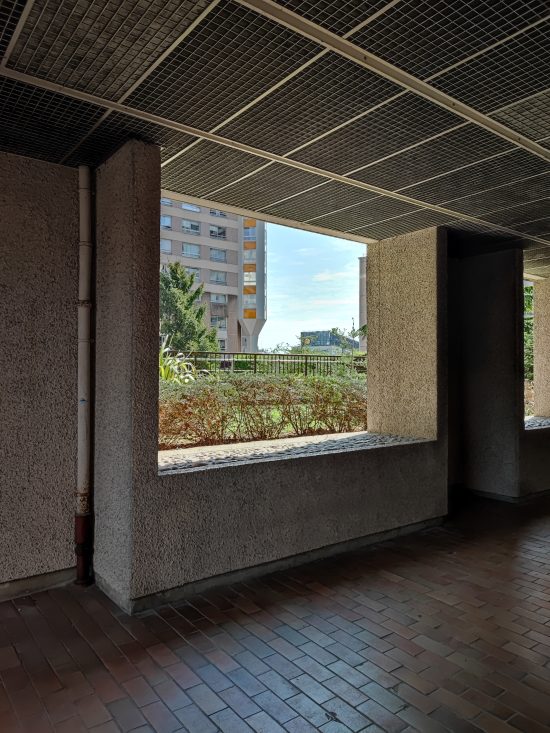

Preview
Xiaomi Redmi K40 Pro+
51
80
In these tests we analyze the image quality of the preview image and the differences between preview images and captured images, particularly in terms of exposure, dynamic range, and bokeh effect. We also check the smoothness of the field-of-view changes on the preview image when zooming with both buttons or when using the pinch-zoom gesture.
These samples show the Xiaomi Redmi K40 Pro+’s preview performance under indoor backlit conditions in photo mode.
Zoom
The Xiaomi Redmi K40 Pro+ achieves a Zoom score of 42. The Zoom score includes the tele and wide sub-scores. In this section, we take a closer look at how these sub-scores were achieved.

Wide
Xiaomi Redmi K40 Pro+
39
58
In these tests we analyze the performance of the ultra-wide camera at several focal lengths from 12 to 20 mm. We look at all image quality attributes, but we pay particular attention to such artifacts as chromatic aberrations, lens softness, and distortion.
This sample shows the performance of the Xiaomi Redmi K40 Pro+’s ultra-wide camera in daylight conditions.

Tele
Xiaomi Redmi K40 Pro+
44
140
In these tests we analyze all image quality attributes at focal lengths from approximately 40 to 300 mm, paying particular attention to texture and detail. The score is derived from a number of objective measurements in the lab and perceptual analysis of real-life images.
These samples show the Xiaomi Redmi K40 Pro+’s tele performance at a medium-range zoom setting.
Video
The Xiaomi Redmi K40 Pro+ achieves a Video score of 102. A device’s overall Video score is derived from its performance and results across a range of attributes in the same way as the Photo score. In this section, we take a closer look at these sub-scores and compare video image quality against competitors.
In our Video tests we analyze the same image quality attributes as for still images, such as exposure, color, texture or noise, but we also include such temporal aspects as speed, and smoothness and stability of exposure, white balance and autofocus transitions.
NOTE: The sample video clips in this section are best viewed at 4K resolution.

Exposure and Contrast
Xiaomi Redmi K40 Pro+
82
118
These video stills show the Xiaomi Redmi K40 Pro+’s video exposure in an indoor setting.

Color
Xiaomi Redmi K40 Pro+
91
107
These video stills show the Xiaomi Redmi K40 Pro+’s video color under indoor lighting.

Autofocus
Xiaomi Redmi K40 Pro+
84
109
This clip shows the Xiaomi Redmi K40 Pro+’s video autofocus performance in low light.

Texture
Xiaomi Redmi K40 Pro+
85
99
This graph shows the Xiaomi Redmi K40 Pro+’s video texture performance under different light levels in the lab.

Noise
Xiaomi Redmi K40 Pro+
82
105
This graph shows the Xiaomi Redmi K40 Pro+’s video temporal noise performance under different light levels in the lab.

Artifacts
Xiaomi Redmi K40 Pro+
79
85
For video artifacts, we check for the same kinds of artifacts mentioned in the Photo section, along with such video-specific artifacts as frame rate variation in different light conditions, judder effect, and moving artifacts (artifacts such as aliasing, color quantization, and flare can often be more intrusive when moving than in a still image).
These video stills show the Xiaomi Redmi K40 Pro+’s ringing artifacts in high contrast conditions.

Stabilization
Xiaomi Redmi K40 Pro+
90
103
In these tests we analyze residual motion when handholding the camera during recording, as well as when walking and running with the camera. We also look for stabilization artifacts such as jello effect, sharpness differences between frames, and frame shift (abrupt changes of framing).
This sample clip shows the Xiaomi Redmi K40 Pro+’s video stabilization in outdoor conditions.


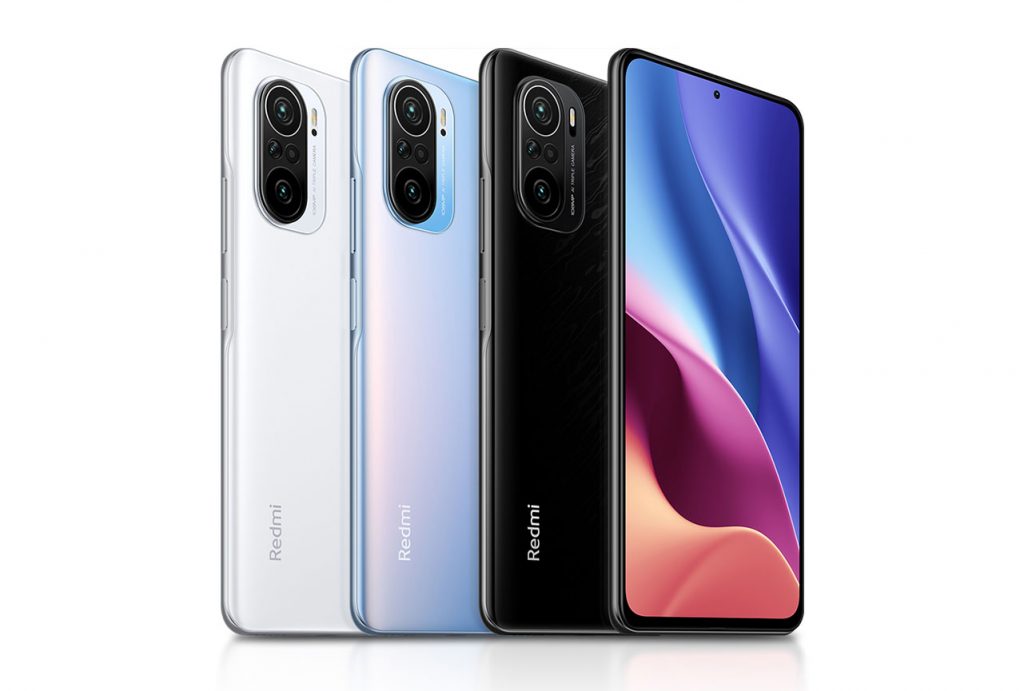


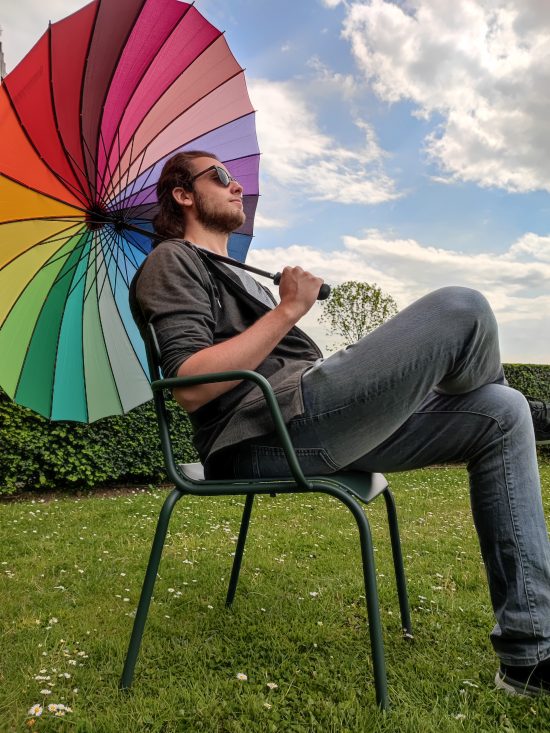
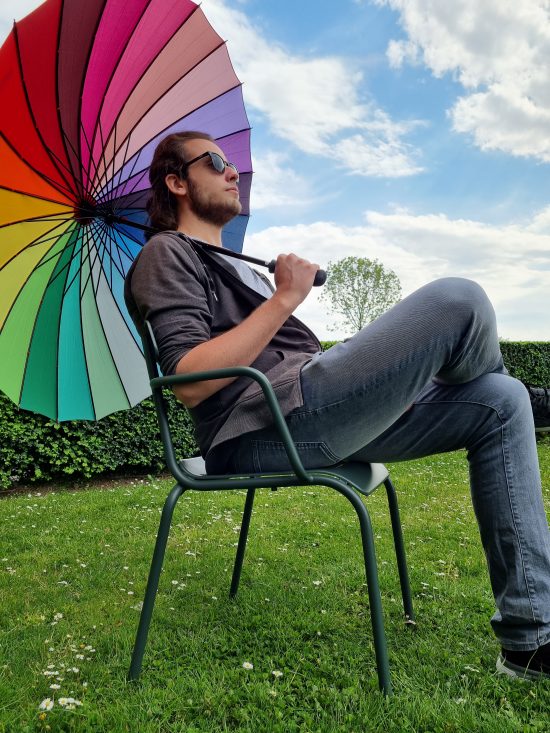
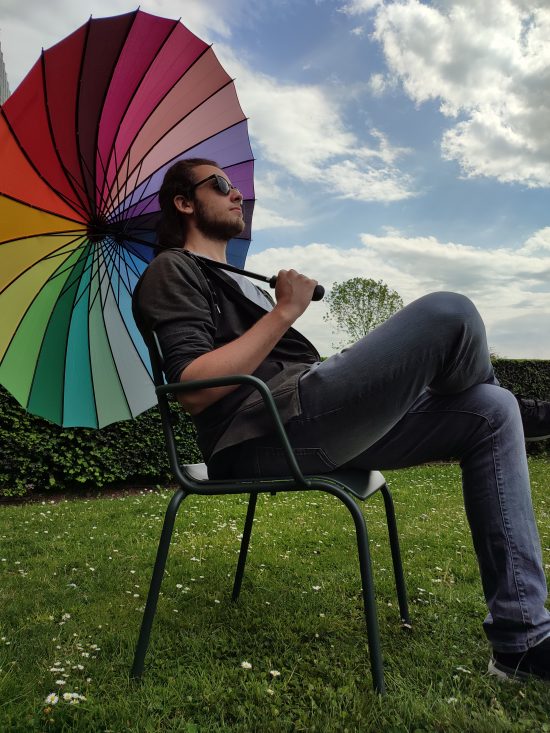









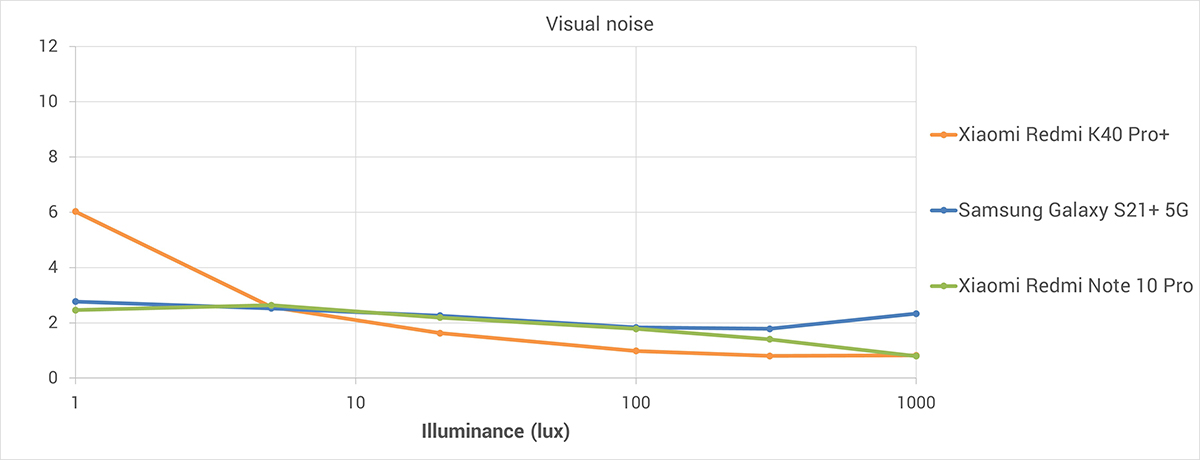






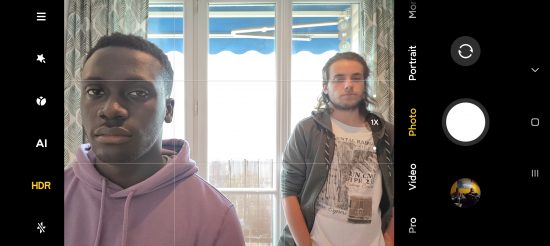

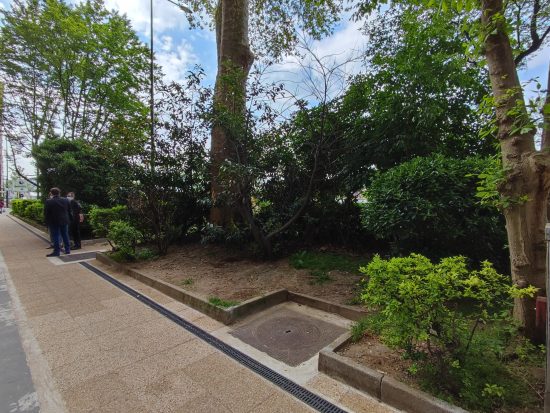
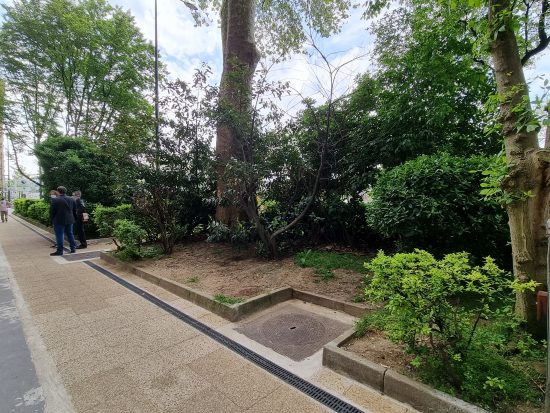
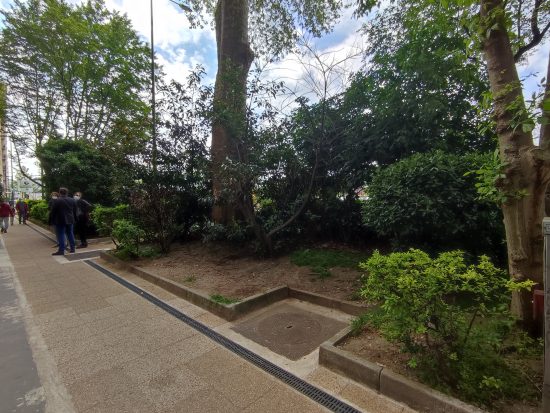






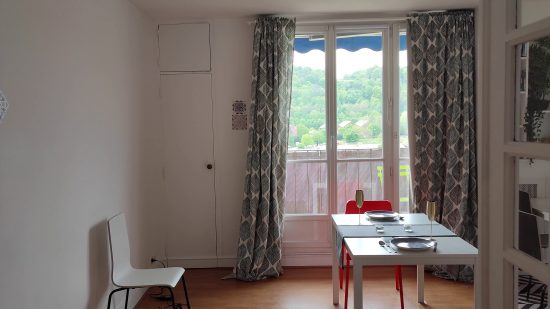
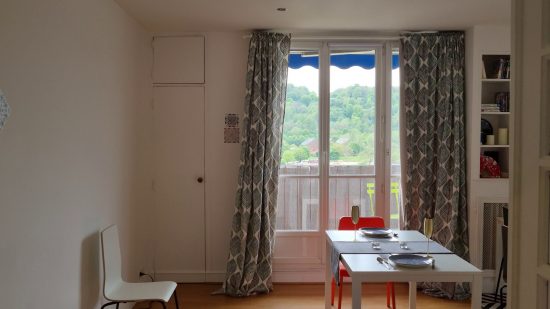
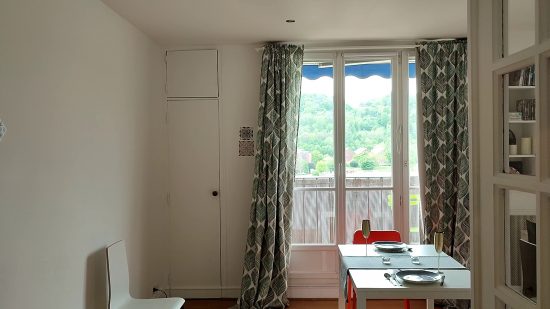
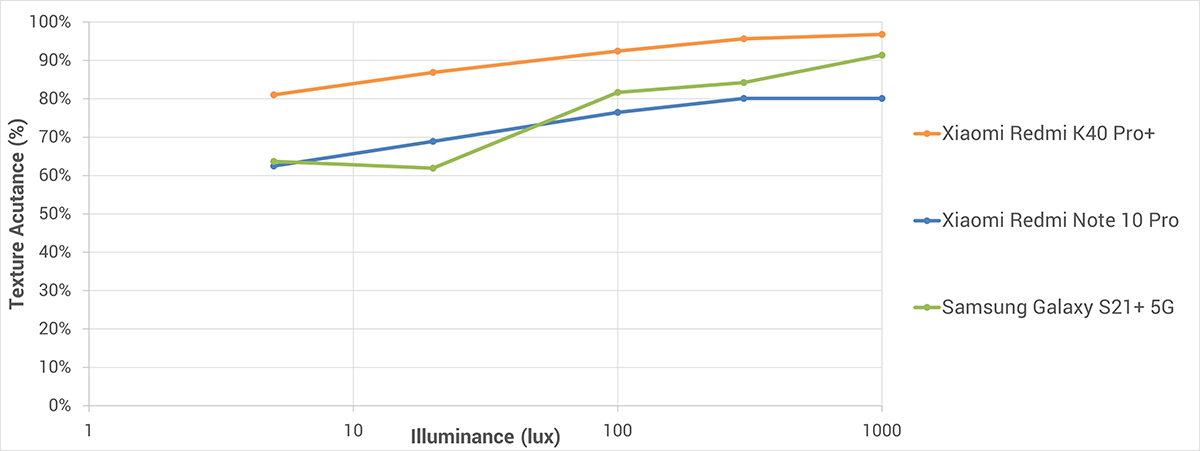
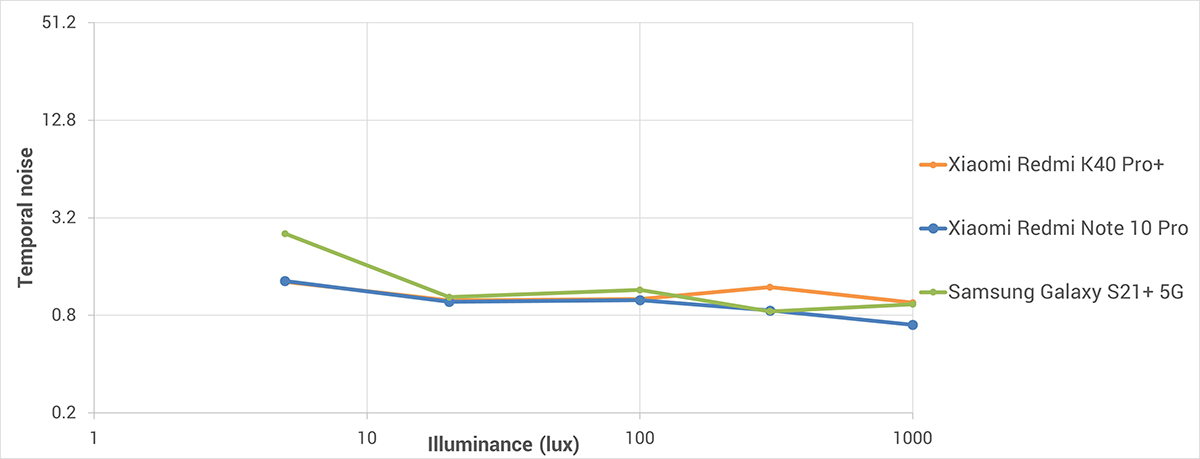



DXOMARK encourages its readers to share comments on the articles. To read or post comments, Disqus cookies are required. Change your Cookies Preferences and read more about our Comment Policy.